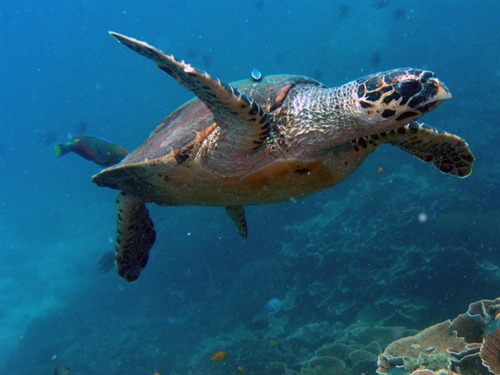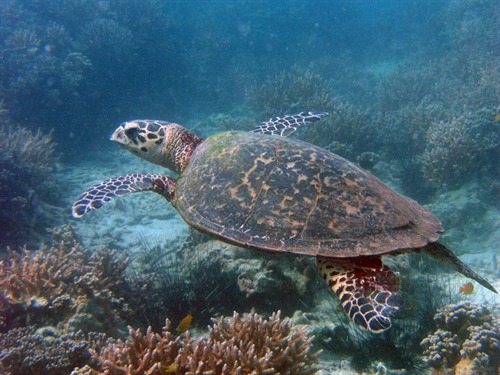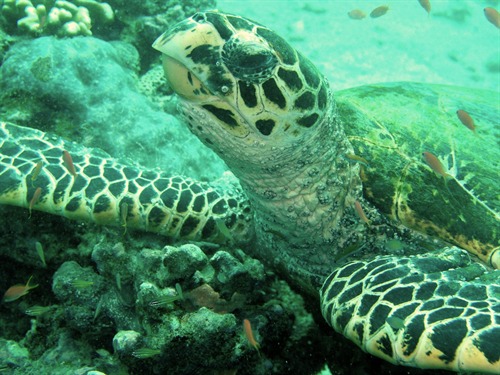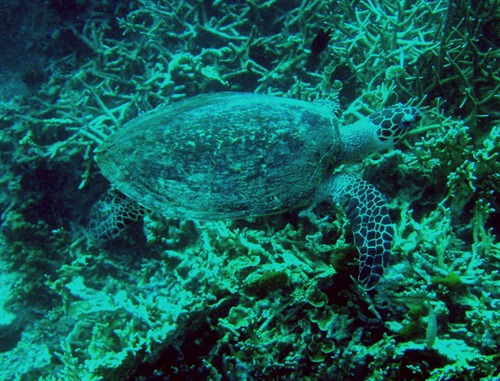
Back
Eretmochelys imbricata (Linnaeus, 1766)
| Family Name: | Cheloniidae |
| Taxonomic Group: | Vertebrates (Reptile) |
| Common Name: | Hawksbill Turtle |
Name
Description
| Description | Limbs modified into elongated paddles. Oval-shaped carapace brown with overlapping scutes marked with irregular yellow and orange mottles; posterior margin the carapace often distinctly serrated. Upper jaw protrudes far beyond the lower one; two pairs of prefrontal scales on the fore head. |
|---|
Ecology, Habitat & Location
| Ecological Notes | This fully marine turtle is usually found in shallow, inshore waters around coral reefs. Females come ashore to lay eggs on selected sandy beaches. It is mainly carnivorous, feeding on crustaceans and sponges. |
|---|---|
| Habitats | Marine, Coral Reef, Open Sea |
| Distribution | The species has a circum-tropical distribution, and is known from all warm seas. In Singapore, some individuals are regularly sighted on the reefs in the Singapore Straits, and nests have occasionally been uncovered on the beaches along the southern coastlines. |
Conservation
| Trends & Threats | Pollution of the sea, reclamation of nesting beaches and over-collection for its valued carapacial scutes, as well as its meat and eggs. Fishing nets can trap and drown turtles. |
|---|---|
| Scientific Interest & Potential Value | The carapace scutes are used to make tortoise-shell products, the meat and eggs are edible and highly marketable. Hatchling turtles are sometimes sold as aquarium pets. |
| Conservation Notes | Habitat protection, strict policing against illegal collection. The Hawksbill Turtle is internationally acknowledged as an endangered species. |
Status
| Singapore Red Data Book Status | Critically Endangered (CR) [2008], Endangered (E) [1994] |
|---|---|
| IUCN Red List | Critically Endangered |
| CITES | Appendix I |
Photos
References
| References | Davison, G.W.H., Ng, P.K.L. & Ho, H.C (Eds.). 2008. The Singapore Red Data Book (2nd Edition). Singapore: Nature Society (Singapore). 285pp |
|---|




.jpg)